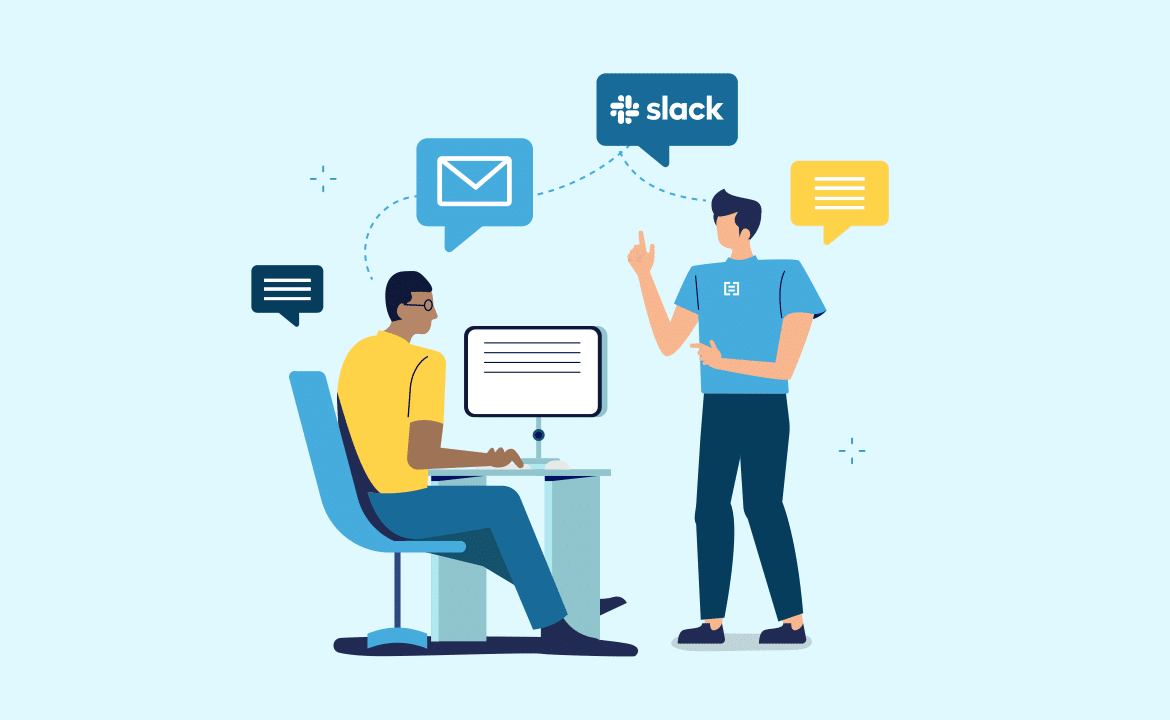At Equal Experts, we often work with organisations that want to increase delivery throughput but find that joiners and movers’ productivity is delayed while they settle into their new roles. We refer to that delay as the onboarding time.
Reducing onboarding time across your organisation is key to increasing delivery throughput, especially when scaling. Follow these onboarding tips to get new starters up and running fast.
We’ve identified seven practices across the Equal Experts network that can be applied to new starters, whether they’re joining, or moving inside an organisation, to successfully reduce onboarding time:
- Set them up for success
- Focus on the people
- Work together
- Create and keep documentation up to date
- Communicate team structure, domain boundaries, and technical architecture
- Provide quality self-service tooling and processes
- Establish a Bring Your Own Devices policy
Read more about each of these onboarding tips below.
Set them up for success.
Teams must invest time and effort in designing and evolving an onboarding process that provides the information, tools, and processes new staff will need to know.
Steps to take:
- Setup access and devices beforehand. Be proactive on service, device, or tooling access to smooth out delays during and after onboarding.
- Proactively remove bottlenecks in the onboarding process. Make each team responsible for onboarding their team members to enable the organisation to horizontally scale.
- Book in a post-onboarding follow-up. Continually evolve the onboarding process based on feedback. Gather data via a short survey and then have a conversation with new starters.
Focus on the people.
Make it as easy as possible for people to join a new team. Ensure they have access to historical decisions and tribal knowledge, so they can conquer the contextual learning curve as quickly as possible. Connect people with teams where their domain knowledge and tools experience will be most relevant. People moving inside the organisation will bring the organisation’s principles, practices, and culture to teams with new people.
Consider the following:
- Reserve capacity in the team for onboarding people. Actively reduce the current work-in-progress for a team, or wait until there is less work-in-progress before adding a new team member.
- Bring in experienced people. Seek people with experience in the domain, in the tools the team uses, and with knowledge of the culture, principles, and practices.
- Retain people within your organisation. Rotating people between teams can be an effective way to keep people interested and retain tribal knowledge.
- Create an environment and forums to welcome new people. Create spaces, events, and communities that encourage connections to form between existing and new members of the organisation. Ensure they don’t feel like a cog in a machine.
Work together
Increase the rate of knowledge transfer and the number of connections formed within the organisation for new starters. Continuously remind them of organisational principles, practices, and culture so that these build into working practices quickly.
Use these strategies:
- Use pairing or mob programming practices. This will increase confidence in delivering quality and enable continuous high-quality knowledge transfer.
- Buddy up new starters with veteran team members. Kick-start their connections within the organisation, and reduce the time it takes for new starters to discover information by ensuring they have someone in the team they can turn to.
- Rotate responsibility of onboarding new starters. Constantly rotate to the newest person capable of providing an onboarding experience for new starters. Ensure key-person dependencies don’t build up within a team.
Create and keep documentation up to date.
Create documents split by onboarding basics, team, domain, and work-tracking documentation. Each type will be consumed during the onboarding process. New starters can help validate and update documentation accuracy, but documentation must be kept updated as part of the team’s ways of working, otherwise its value drops significantly. Avoid letting tribal knowledge accrue within people.
Focus on these four types:
- Onboarding basics. Keep it short form and high-level. It acts as a signpost to other information. In the absence of other documentation, it can be a lifeline to new starters.
- Team. This documentation describes ways of working, eg. definition or done, records of past team meetings, and retrospectives. It helps new starters understand what is expected by the team. It can include tooling documentation if other sources do not provide any.
- Domain. This explains the nuance of ‘What’ and ‘Why in the organisation’s product domains. This is key to helping new starters decipher complexity and domain-specific language.
- Work Tracking. The purpose of this is primarily to track current work, rather than as an onboarding document in itself. It helps to brief new starters on current work-in-progress and upcoming work.
Communicate team structure, domain boundaries, and technical architecture.
Each organisation will organise differently around sets of products, value streams, workstreams, business domains, or user experiences. Every team structure and technical architecture will be different. Help new starters know and understand why and how your organisation operates.
Factors to include:
- Share team structure. Define team purposes & responsibilities. Clarify how the organisation has chosen to structure its responsibilities into teams and what method is used.
- Share business domain boundaries and how they translate into team ownership. Inform new starters which business domains specific teams are working in.
- Explain technical architecture. Architectural choices and team structures shape each other in an organisation. Explain how the architecture complements the team structures.
Provide quality self-service tooling and processes.
Reduce the onboarding time required to be productive by switching bottlenecked teams to a self-service approach. Increase delivery performance and job satisfaction, and reduce burnout by building a continuous delivery approach and principles into tooling and processes.
These practices will help:
- Switch to trust-but-verify. Reduce gatekeeping of access to tooling. Create measures to validate that misuse doesn’t occur.
- Build Continuous Delivery principles into tooling and processes. Invest in teams translating work into value as fast as possible for your organisation. Automate the path to production. Automate tests to increase confidence.
- Automate setup. Reduce friction involved in setting up services or tools locally. Standardise local environments to reduce time spent on setup.
Discover more on how to provide quality self-service tooling and processes to members of your organisation when they’re building Digital Services by reading the Digital Platform Playbook.
Establish a Bring-Your-Own-Devices policy.
Where new starters cannot work until company devices are provisioned and delivered, this can result in a significant increase in onboarding time. Establish a Bring Your Own Devices (BYOD) policy where new starters can, if they desire, use their personal devices to facilitate faster onboarding.
You can help implement a BYOD policy by:
- Changing Networking and Tooling. Adopt a BeyondCorp approach. Remove reliance on corporate networks to establish trust. Enable SSO on tooling where possible.
- Changing security policies. Write a BYOD security policy that details requirements for personal devices. Require passwords, disk encryption, anti-malware/virus and backup software installation on personal devices.
Where it isn’t possible to establish a BYOD policy, colocated teams should use pairing/mobbing practices to avoid the device dependency. Distributed teams should prioritise setting up access and devices ahead of time to minimise delays during onboarding.
Want more onboarding tips?
You will find additional transferable practices in this Expert Talks Online video: “So you want to onboard a devops practitioner” Watching this will help you get new starters delivering value from day one.

